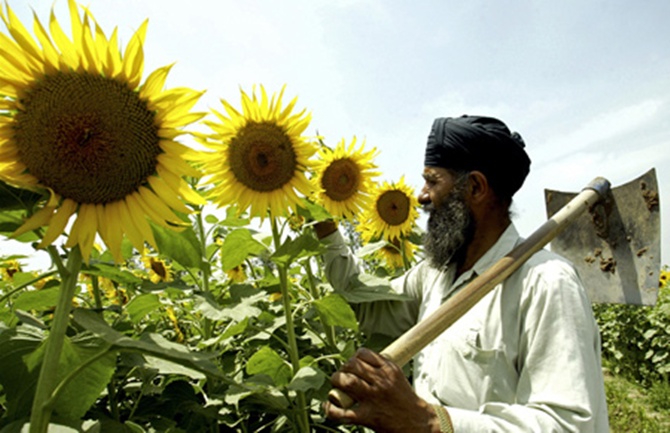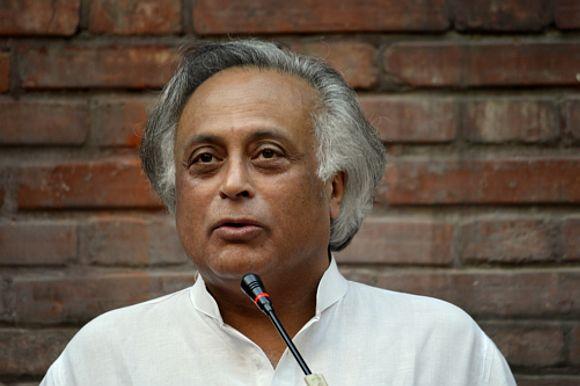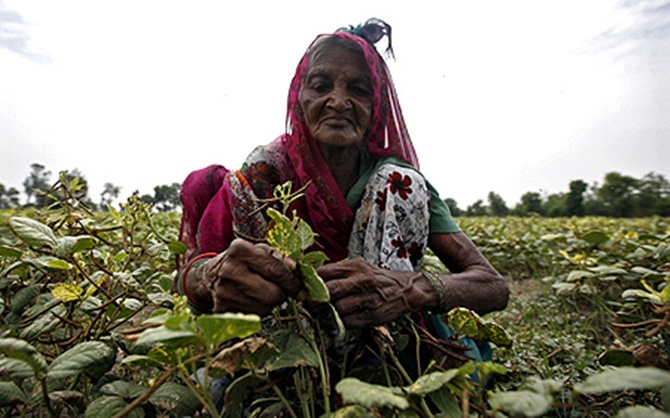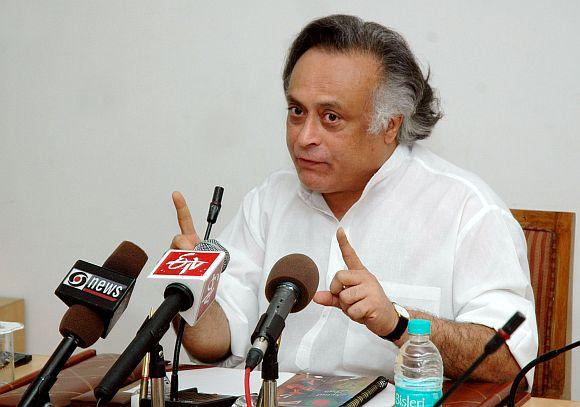
After the land acquisition bouncer, comes a googly from Rural Development Minister Jairam Ramesh, this time in the form of the Draft National Reforms Policy 2013.
According to the draft, “Exemptions to religious, educational, charitable, research and industrial organisations, as well as plantations and aqua farms should be strictly discontinued.
“These institutions shall not be allowed to use more than one unit of 15 acres.”
Does this mean we won’t have more institutions such as the Jawaharlal Nehru University, spread over about 1,000 acres here?
. . .

Another paragraph in the draft Bill says, “All states shall impose a ceiling not only on ‘ownership’ of land holdings, but also on ‘operational’ land holdings to prevent concentration of large tracts of land through lease-in.
“Under no circumstance shall a person/institution/organisation be allowed to own more land than the ceiling.”
The draft Bill does not make any distinction between private and government-owned institutions and doesn’t specify whether a person or institution or organisation would include factories or not.
Social activists say the provision is aimed at reining in private universities “that are interested in land grab rather than offering quality education at affordable prices”.
. . .

“Some private universities have campuses spread over hundreds of acres, which is absurd. Perhaps, the Bill is intended to check such misuse,” says an activist with Ekta Parishad, which has been fighting for land reforms for many years.
However, Dilip Mookherjee, professor of economics at Boston University and an expert on land reforms, says, “The ceiling limits on exemptions for religious, education, charitable institutions to a single plot of 15 acres is ridiculous.
“There will be further proliferation of institutions opened under different names to circumvent this regulation, while genuine charitable and educational institutions will be stymied.”
Maitreesh Ghatak, professor at the London School of Economics, says, “This does not make any sense at all.
. . .

This is reflective of a planning-era mindset.
If someone wants to build a university or a business establishment on an area that exceeds 15 acres and is willing to pay for it, what are the reasons to try to stop that?”
The draft Bill also mandates “every state should revise its ceiling limits, if the existing limit is more than 5-10 acres in the case of irrigated land and 10-15 acres for non-irrigated land.”
“The ceiling limit should have come down long ago.
“It is a myth that production or productivity is impacted by the size of landholding.
“The fact is productivity has nothing to do with the size of a plot,” says D M Diwakar, director of Patna-based A N Sinha Institute of Social Studies.
. . .

He argues contrary to popular perception, productivity would increase with a lower ceiling “because of crop diversification and improved irrigation facilities”.
The proposed land reforms legislation is intended to distribute land to the landless by appropriating it from those who hold land exceeding the ceiling.
The Bill estimates “60 per cent of the country’s population has a right over only five per cent of the country’s land, 10 per cent of the population controls about 55 per cent of the land”.
Mookherjee says, “It is very difficult for any government to identify who owns how much land.
“So, it is hard to enforce ceilings or identify the genuinely landless.
. . .

“The fundamental reason is the sorry state of land records.
“The last cadastral surveys were carried out under the British colonial administration -- there have been none in Independent India.
“Such is our real commitment to land reform! Land records are kept on a plot-by-plot basis.
“So, it is hard to know how much an individual (more so a household) owns. There are benami records.
“No one really knows how many members are there in any given household.
“The nature of land (irrigated or not) is based on 1940 surveys; so, these are utterly unreliable.”
. . .

Attempts to achieve judicious distribution of land can be traced to post-independence days.
Nearly all state governments have legislation to ensure no one holds land exceeding a certain ceiling, but these haven’t been followed, either in letter or spirit, in most states except West Bengal and Kerala.
Recently, the Nitish Kumar-led government in Bihar tried to give more teeth to its land reforms legislation, but had to beat a hasty retreat following opposition from the powerful land-owning class.
The draft Bill specifies “for the purpose of curbing and monitoring evasions of ceiling laws through fraudulent land transactions, the Benami Transactions (Prohibition of the Right to Recover Property) Act, 1989, shall be appropriately amended.”
. . .

The Bill seeks to achieve total computerisation of land records and proposes to set up of a National Authority for Computerisation of Land Records, as well as state authorities.
It says only barren and uncultivable land should be used for non-agricultural purposes.
“According to official figures, there are 17.7 million hectares of barren and uncultivable land lying unused.
“So, such land should be acquired for industry and public purpose as far as possible.
“Although this is clearly mentioned in most project proposals, its execution has been a problem.
“To ensure barren and uncultivable land is acquired, proper monitoring should be adopted,” the draft Bill says.
Another laudable provision in the Bill is that pertaining to the registration of tenants.
Mookherjee says, “Identifying who is leasing to whom is very difficult for the government. . . attempts to enforce tenancy registration end up driving most tenancy underground.
. . .

“It is resisted vigorously by owners who tend to be politically more powerful.
“Of course, it increases the outside options of tenants and for those registered, it helps increase productivity and lower poverty, as shown by studies on the West Bengal tenancy reforms in the 70s and 80s.
"But one needs the political will and administrative ability to ensure this is enforced, which is typically lacking.”
Draft Land Reforms Bill